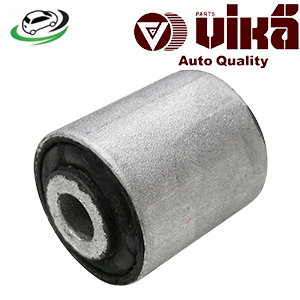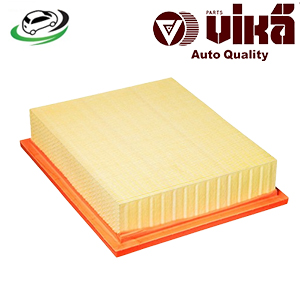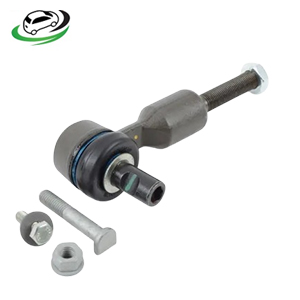-9%
Get Steering Tie Rod End A4 Audi B6/A6 Quattro Audi C6/S4 Audi B6/A8 Audi D2/A8 Quattro Audi D2/A4 Audi B5/VW Passat B5 4F0419811E
The steering tie rod end is a critical component of a vehicle’s steering system, playing a vital role in ensuring precise control and handling. This comprehensive guide explores the function, design, common issues, and maintenance of the steering tie rod end.
1. Purpose and Function of the Steering Tie Rod End
The steering tie rod end connects the steering rack to the steering knuckle, translating the steering wheel’s input into wheel movement. It plays an essential role in the steering system, contributing to vehicle control and handling.
1.1. Steering Control
- Linkage: The tie rod end serves as a linkage between the steering rack (or steering box) and the steering knuckle, which is attached to the wheel. When the driver turns the steering wheel, the movement is transmitted through the tie rod end to the wheels, directing the vehicle’s path.
- Alignment: It ensures that the wheels are aligned correctly according to the steering input, allowing for precise and accurate steering control. Proper alignment is crucial for safe and responsive handling.
1.2. Suspension Coordination
- Movement Accommodation: The tie rod end allows for movement of the suspension components while maintaining the connection between the steering system and the wheels. This ensures that the wheels follow the intended path and respond accurately to steering input.
- Handling and Stability: By maintaining proper wheel alignment and ensuring accurate steering response, the tie rod end contributes to the overall handling and stability of the vehicle.
2. Design and Structure of the Steering Tie Rod End
The steering tie rod end is designed to withstand significant forces while providing smooth and precise steering. It consists of several key components:
2.1. Components
- Ball Joint: The tie rod end typically includes a ball joint at one end. This ball joint allows for pivoting movement, accommodating the range of motion required for steering and suspension movement. The ball joint is usually housed in a metal socket and is secured with a retaining clip or nut.
- Tie Rod Shaft: The tie rod shaft connects the ball joint to the steering rack or steering box. It is usually made from high-strength steel or alloy materials to withstand the stresses and forces involved in steering.
- Boot or Dust Cover: A rubber or plastic boot covers the ball joint, protecting it from dirt, moisture, and debris. This boot helps to keep the lubricating grease inside the joint and prevent contamination.
2.2. Types of Tie Rod Ends
- Inner Tie Rod End: The inner tie rod end connects directly to the steering rack or steering box. It is typically fixed and does not move relative to the rack, but it allows the steering rack to pivot and move.
- Outer Tie Rod End: The outer tie rod end connects to the steering knuckle or spindle and allows for movement of the wheel. It is adjustable, enabling the alignment of the wheels to be fine-tuned.
2.3. Mounting and Installation
- Attachment Points: The tie rod end is mounted to the steering rack or box and the steering knuckle or spindle using bolts or nuts. Proper mounting is essential for ensuring that the tie rod end functions correctly and maintains the alignment of the wheels.
- Adjustment: Some tie rod ends are designed with an adjustable sleeve or thread that allows for fine-tuning of the wheel alignment. Proper adjustment is crucial for ensuring accurate steering and handling.
3. Common Issues with Steering Tie Rod Ends
Over time, steering tie rod ends can experience wear and deterioration due to exposure to road conditions, driving stresses, and lack of maintenance. Common issues include:
3.1. Wear and Damage
- Ball Joint Wear: The ball joint at the end of the tie rod can wear out over time due to constant movement and stress. This wear can cause play or looseness in the steering, leading to poor handling and steering response.
- Boot Damage: The protective boot covering the ball joint can become cracked, torn, or damaged. This can allow dirt, moisture, and debris to enter the joint, leading to accelerated wear and potential failure.
3.2. Steering Problems
- Loose Steering: Worn or damaged tie rod ends can cause loose or vague steering. The driver may experience a lack of responsiveness or difficulty in maintaining control of the vehicle.
- Uneven Tire Wear: A worn tie rod end can affect wheel alignment, leading to uneven tire wear. This can result in increased tire replacement costs and decreased handling performance.
3.3. Noise and Vibration
- Clunking Sounds: Worn tie rod ends can produce clunking or knocking noises when driving over bumps or during steering maneuvers. This noise indicates that the tie rod end is no longer functioning properly.
- Vibrations: Excessive play or wear in the tie rod end can cause vibrations felt through the steering wheel or vehicle chassis. This can affect driving comfort and stability.
4. Maintenance and Replacement
Regular maintenance and timely replacement of steering tie rod ends are essential for ensuring proper vehicle handling and safety.
4.1. Inspection
- Visual Check: Regularly inspect the tie rod ends for signs of wear, damage, or leaks. Look for any visible cracks, tears, or excessive play in the ball joint. Check the boot for signs of damage or deterioration.
- Steering Performance: Pay attention to the vehicle’s steering performance. If you notice any unusual noises, vibrations, or handling issues, it may indicate a problem with the tie rod ends.
4.2. Replacement Procedure
- Removing the Old Tie Rod End: To replace a faulty tie rod end, first, lift and support the vehicle safely. Remove the wheel and access the tie rod assembly. Disconnect the tie rod end from the steering knuckle or spindle and the steering rack or box. Remove any securing bolts or nuts and detach the old tie rod end.
- Installing the New Tie Rod End: Install the new tie rod end by reversing the removal process. Ensure that the tie rod end is properly aligned and secured with the appropriate hardware. Adjust the tie rod end as needed to maintain proper wheel alignment.
- Alignment: After replacing the tie rod end, it is essential to perform a wheel alignment to ensure that the suspension and steering systems are properly adjusted. This helps to prevent uneven tire wear and ensure accurate handling.
4.3. Professional Service
- Consult a Mechanic: If you are unsure about the condition of the tie rod ends or if you encounter difficulties with replacement, it is advisable to consult a professional mechanic. They can perform a thorough inspection, diagnose any issues, and ensure that the tie rod ends are properly installed and adjusted.
5. The Role of Steering Tie Rod Ends in Vehicle Safety
Steering tie rod ends are crucial for maintaining the safety and performance of the vehicle’s steering system. Their proper functioning ensures:
5.1. Accurate Steering
- Responsive Handling: Well-maintained tie rod ends ensure that steering input is accurately translated to wheel movement, providing responsive and predictable handling.
5.2. Stability and Control
- Consistent Alignment: Properly functioning tie rod ends maintain wheel alignment and contribute to vehicle stability. This helps to prevent handling issues and ensures that the vehicle remains stable during driving.
5.3. Safety
- Preventing Accidents: By ensuring precise steering and handling, functional tie rod ends contribute to overall vehicle safety. They help to prevent accidents caused by steering failures or alignment issues.
6. Advances in Steering Tie Rod End Technology
Modern vehicles may incorporate advanced technologies and designs to improve the performance and durability of steering tie rod ends:
6.1. Enhanced Materials
- High-Strength Alloys: Newer tie rod ends use high-strength alloys and advanced materials to improve durability and resistance to wear. These materials can handle higher stresses and provide longer service life.
- Improved Lubricants: Advances in lubricants and sealing technologies help to extend the lifespan of tie rod ends by reducing friction and preventing contamination.
6.2. Precision Engineering
- Advanced Manufacturing: Modern tie rod ends are manufactured with greater precision and consistency, resulting in improved performance and reliability. Advanced manufacturing techniques ensure that tie rod ends meet strict quality standards.
6.3. Integrated Designs
- Adjustable Tie Rod Ends: Some vehicles feature tie rod ends with integrated adjustment mechanisms, allowing for easier and more precise alignment adjustments.
Follow us on Facebook for more parts.



